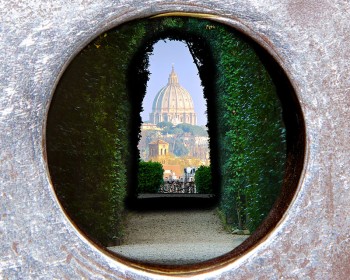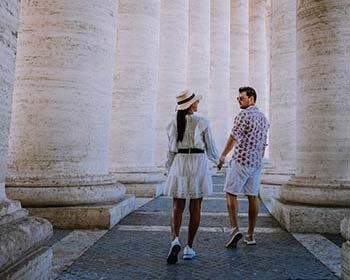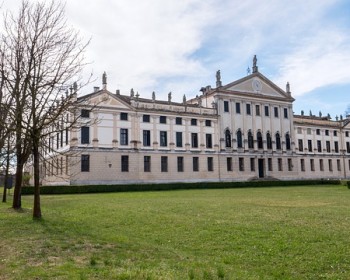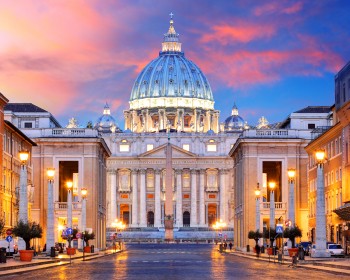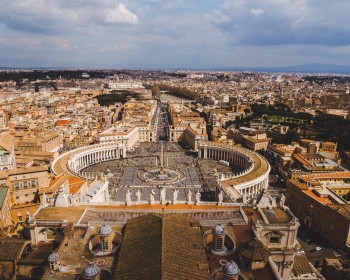Ancient Greece’s Hellenistic period, prevalent in 323 BCE until 31 CE, left a legacy of naturalistic sculptures that more fully expressed dynamic movement. Among the world’s most beautiful examples of expressive Ancient Greek sculptures, such as the Venus de Milo, The Winged Nike, Aphrodite, Pan and Eros, we also find the impressive ‘Laocoön and His Sons’.
This magnificent sculpture was discovered in the vineyard of Federico De Fredis, captivating attention since the moment it was unearthed during an excavation in 1506. Its remarkable beauty led Pope Julius II to send his esteemed Michelangelo on site to review the artwork and its value.
Upon receiving Buonarotti’s recommendation, Pope Julius II, a lover of Art, bought the sculpture and had it placed on display in the courtyard. Thus, the ‘Laocoön and His Sons’ was the very first art piece of what was later to become the extensive Vatican Museums. Originally, during ancient times, its known home was the palace of Emperor Titus.
The Ancient Greek sculpture depicts Laocoön and his Sons being killed by Athena and Poseidon’s serpents of the sea with the purpose of empowering the fall of Troy, which he had attempted to prevent with continued warnings thus angering the gods. Dating back to around 200 BCE, the awe-inspiring Hellenistic style the Laocoon was sculpted in depicts the dynamic movement as its main characters desperately try to free themselves from the serpents. This results in an entanglement of snakes and limbs that masterfully conveys tension and resistance. The anatomy and expressions of each character have a realism to them that is true to the influential Hellenistic period and that creates powerful emotion. It is this quality, above all, that has made this art piece world famous.
A Roman philosopher, Pliny the Elder, helps us discover the possible author in his “The Natural History” book (XXXVI volume) by stating that “This group was made in concert by three most eminent artists, Agesander, Polydorus, and Athenodorus, natives of Rhodes.”
The story behind the Laocoön and his Sons originates in Greek mythology as Laocoön was a priest of Apollo and, according to the legend’s most known version, he attempted to warn the Trojans about the Greek wooden horse trap that ultimately leads to the fall of Troy. This angered Apollo and Athena, who sent two sea serpents to kill him along with his sons, Antipas and Thymbraeus just as they were preparing to make a sacrifice on the altar of Poseidon. In other versions of the myth, whether incurring the wrath of Poseidon or Athena and Apollo, Laocoön meets his doom due to his choice to marry instead of remaining celibate as requested by the gods.
A perfect example of the influential Hellenistic sculpture genre, this Ancient Greek art piece has inspired many other artists over the centuries and still wows with its realism and complex emotion.
Discovered more than 500 years ago, this awe-inspiring sculpture can be admired nowadays in the Museo Pio Clementino of the Vatican Museums.
Might interest you:
-> Top 10 masterpieces to see at the Vatican Museums


